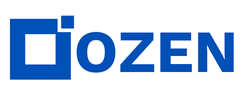Introduction
Design geometry will often have features that make it impractical to directly import into our simulation tools like Ansys Mechanical, LS-DYNA, Fluent, and others. There might be interferences or misalignments that are suitable for manufacturing purposes that cause headaches in our simulation tools. Other times, there are small features like holes or fillets that are necessary for the manufactured product that are extraneous for simulation purposes and only make it more challenging to simulate. There may also be regions of interest in the model that you want to extract results from, like specific surfaces that don't exist in the model.
This blog goes over some of the ways we can use Ansys Discovery to preprocess our CAD geometry before bringing it to a simulation tool.
Defeaturing
Defeaturing is a common practice for preparing geometry for simulation. This can involve removing unnecessary complex features that won't affect the behavior of the model. This can include imprinted surfaces, holes, fillets, or other features. The below images show a before and after of some defeaturing. Many of the rounds and a few of the holes have been removed to make it easier to mesh.


The following sections will go over some of the different tools we have within Discovery to help prepare geometry for analysis.
Pull Tool
The pull tool is a versatile tool that we can use for a variety of applications, including adding or removing fillets, scaling bodies and extruding surfaces.
The below example shows how we can use the pull tool to add a fillet to an edge. After selecting the pull tool, I click on the edge, and drag to create the fillet. Then I start typing in a value to create a fillet with a target size.

We can also delete fillets in a similar manner. We can either click on the fillet and click delete, or we can set the radius to 0.

Like me, you might not want to select every individual edge to add fillets to, or every edge you want to remove fillets from. We can double click on a edge or fillet to select all edges or fillets as part of that edge loop or fillet loop. The below example shows how we can select the entire top edge loop and quickly add fillets to it.

Merge Faces
Our geometry might import with extra edges that are not necessary to define the geometry. This can cause issues with meshing, either preventing swept meshes from being viable or causing sliver edges. We can use the merge faces tool to merge faces.

We can also do the same thing by selecting a problematic edge and clicking delete. I click escape to leave the merge tool. Then I select the edge and use the delete key to remove the edge.

Split Faces
We might also want to split faces to create regions to apply boundary conditions, loads, contacts, forces, or result objects. We can use the sketch tool to draw a shape on the surface of an object and it will split the surface. This split surface is imported into our simulation tools and we can apply boundary conditions to it.

We can also use the imprint tool to imprint the shape of one body on another. We might use this for bodies we want to use as a boundary condition. Below I show how we use the imprint tool to imprint the shape of a cylinder onto the cube.

We can also project surfaces from one body to another, or from one surface on a body to the other. We can use the project tool for this. We use this tool for the same reasons as the imprint tool, to create useful regions for us to work with.

Power Select
We can also use the power select option within Discovery to select multiple target features to remove. In the below example, I use the power select feature to select different faces and holes to remove.

Body Merge
We can also merge and split bodies within Discovery. This can be helpful for combining two parts that are bonded together and can be simplified to be one part. The below example shows how we use the combine tool to merge two bodies. We can see in the design tree on the right how two bodies becomes one when using the combine tool.

Split Body
We can also split bodies. We might consider splitting bodies to allow for certain mesh operations, like refined meshes or certain meshing methods like swept meshes or multizone meshes. We can split bodies using different faces or planes. In the below example, I create a plane to split the body.

Conclusion
Ansys Discovery has multiple tools that allow engineers to efficiently defeature and prepare CAD geometries for simulation. There are multiple ways for us to accomplish the same goal, and this process can involve a lot of trial and error. Ansys Discovery provides the user with the best tools for this purpose.
Ozen Engineering Expertise
|
Ozen Engineering Inc. leverages it's extensive consulting expertise in CFD, FEA, thermal, optics, photonics, and electromagnetic simulations to achieve exceptional results across various engineering projects, addressing complex challenges like multiphase flows, erosion modeling, and channel flows using Ansys software. |
 |
Jun 27, 2025 5:06:53 PM
